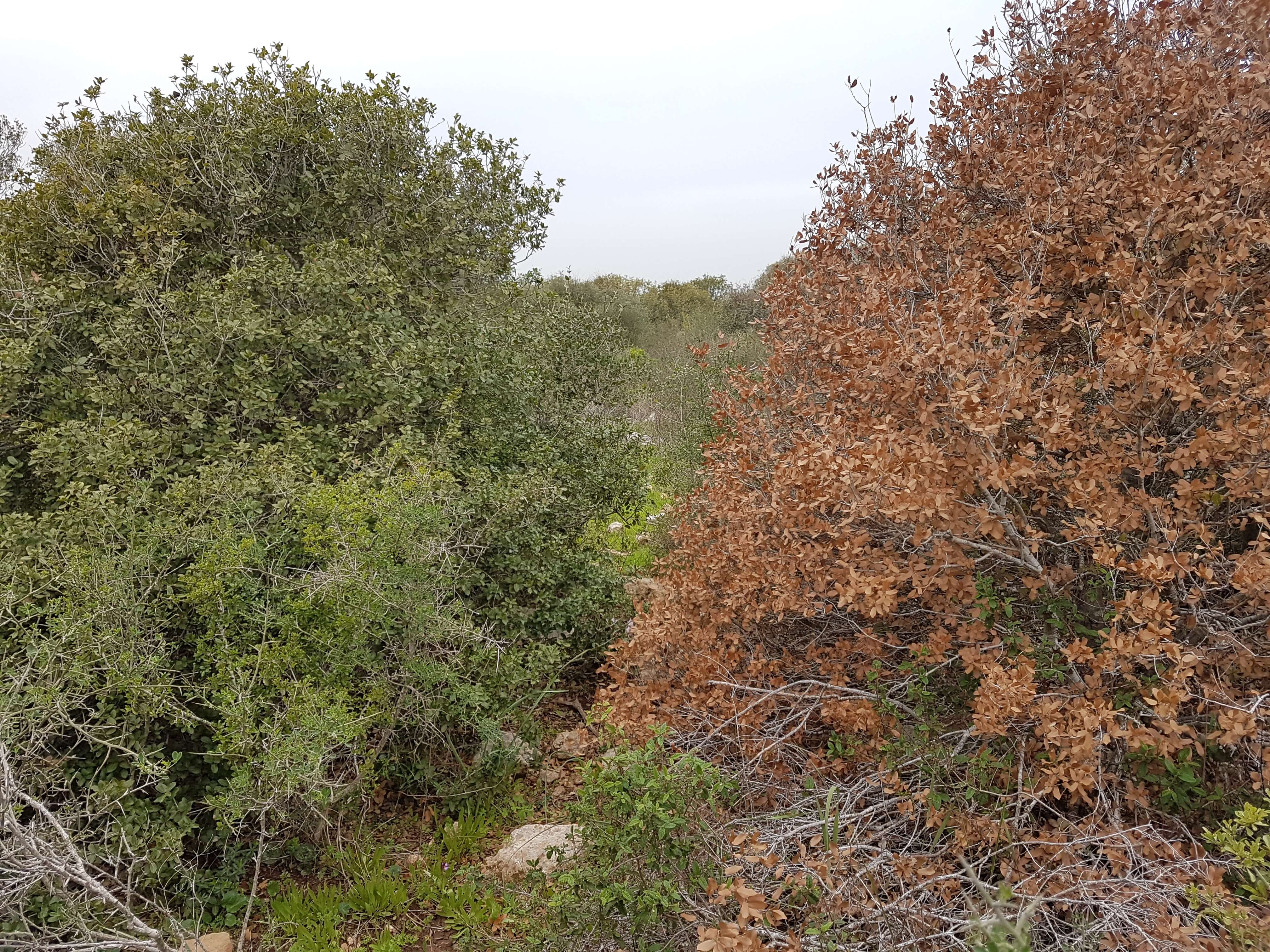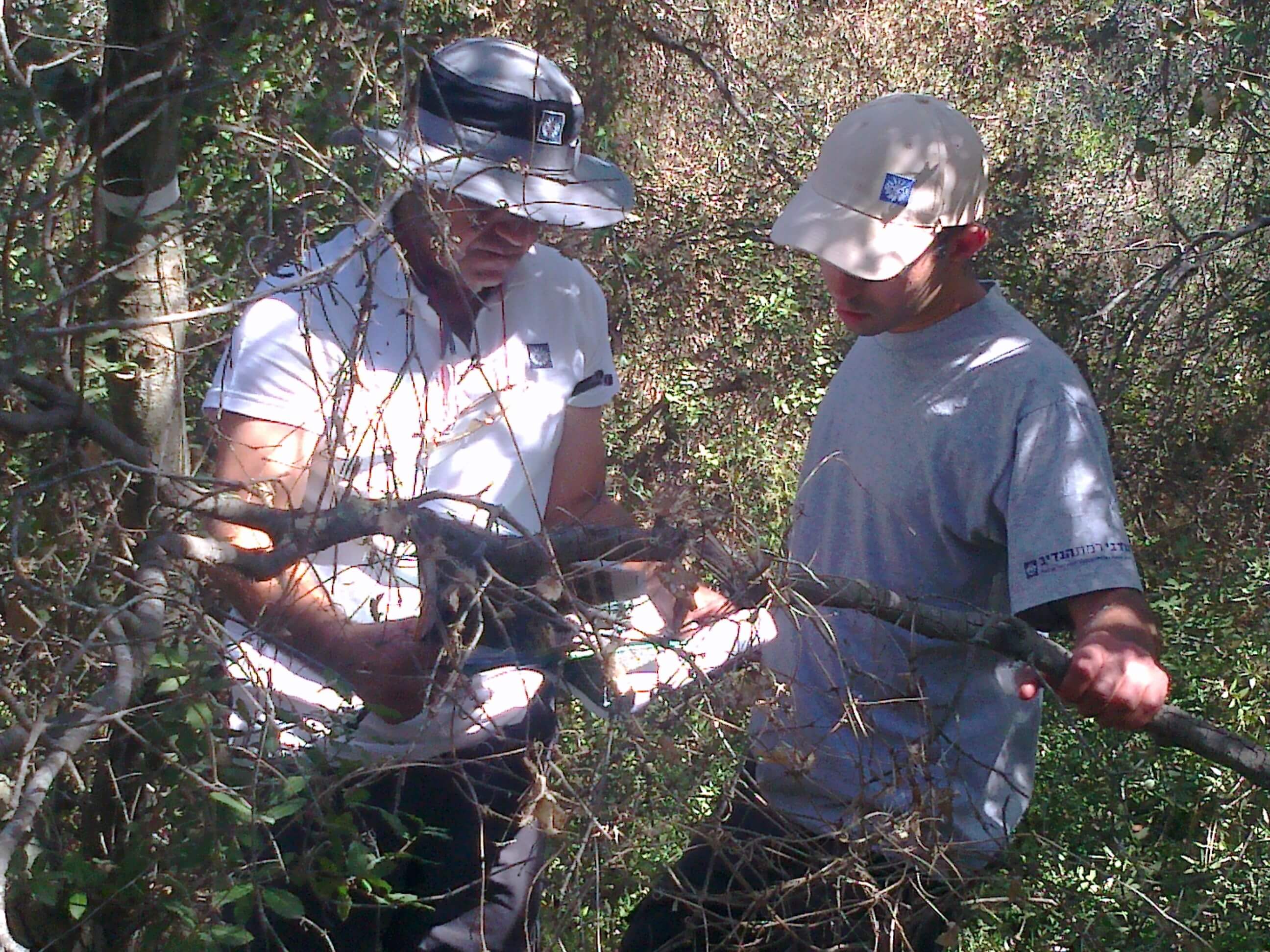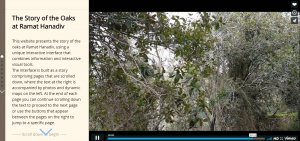It was found that common oak trees are sensitive to dryness, especially when the average amount of precipitation is less than 450 mm of rain. Thus, for example, an extreme drought occurred in the 2013/2014 rainy season, in which only about 50% of the average amount of rain fell and the temperature values in the winter were relatively high.
According to the survey conducted in the fall of 2014, it appears that a minority of rainfall in the previous years and the unusual dryness of this winter had a negative effect on the condition of the oak trees in the park. Canopy density (the amount of foliage in a tree) decreased in about 70% of the trees. Over 20% of the trees sampled were dry. Many oak trees showed signs of stress, and only a few trees had a full canopy and no dry leaves. Apart from the dryness, there may be a load of climbing plants weighing on the trees, due to competition for the amount of available water.
At the same time, at the end of the dry season of 2015, after a particularly wet winter, most of the trees recovered, the canopy density increased again in 70% of the trees and the relative cover of dry leaves decreased. New growth of the foliage with the improvement of the conditions, indicates plasticity in the response of trees to environmental conditions. However, the lack of recovery of those trees that lost all their foliage following the extreme dry year suggests that the plasticity is partial and that beyond a certain threshold of water stress the tree may not survive.
The good news is that in recent years, in compliance with the gradual increase measured in the average amount of precipitation, the average foliage density of the trees has also increased. It seems that it is very important to continue long-term and continuous monitoring of the condition of the trees, in parallel with monitoring the amounts of precipitation throughout the years.







